On the 8th September 1888, the people of the East End were waking to the news that the person responsible for the murders of Martha Tabram and Mary Nichols had struck again.
His victim this time was Annie Chapman; and her body had been discovered at 6am that morning in the backyard of number 29 Hanbury Street by John Davis, a resident of the house.
THE ANNIE CHAPMAN VIDEO
As part of our online project to document the Jack the Ripper murder sites then and now, I retraced Annie Chapman’s last hours as she left her lodging house in Spitalfields and her likely journey to 29 Hanbury Street, where her body was found.
ANOTHER MURDER IN WHITECHAPEL
On Monday 10th September 1888, The London Daily News tried to convey to its readers an idea of the shock and disbelief that the latest murder had generated in the district:-
“Once more the neighbourhood of Whitechapel and Spitalfields has been terribly shocked by a brutal and mysterious murder.
Before the inquest on Mary Arm Nichols has been concluded, and almost before the grave has closed over her, another woman of the same unhappy class has mot precisely similar fate, and, as before, no possible trace of the murderer can be found.
“For all we can tell,” said an agitated woman in the crowd yesterday assembled before the house at which the body had been found, “he may be one of the mob listening to the speechifying about it.” It is anything but improbable.
That the assassin should have been there would have been quite in keeping with the cool audacity which must of necessity be characteristic of the man who, in all probability, has perpetrated all four of the murders [the article is including the murder of Emma Smith] which have so shocked this locality.”
AN IDENTIFICATION HAD BEEN MADE
One of the major problems facing the police in the immediate aftermath of a murder – aside from trying to trace the perpetrator – was identifying the victim.
But, in the case of Annie Chapman, it would appear that identification had been swift and The London Daily News was even able to provide some biographical detail about her on the MOnday, two days after her death:-
“It seems to be pretty conclusively established that the victim in this ease is Annie Chapman, the widow of a veterinary surgeon who died about a year and a half ago at Windsor.
She had long been separated from her husband, who appears to have allowed her ten shillings a week while he lived, and she has been known for the past six years among the lodging-houses of the neighbourhood in which she met her death.”
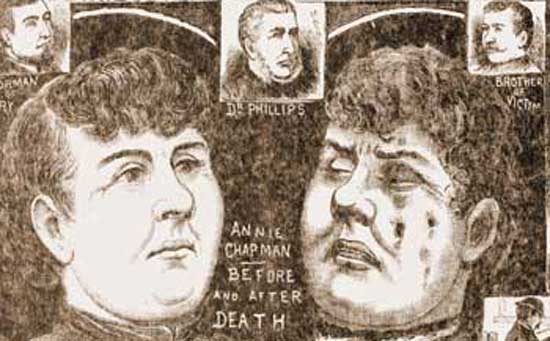
EARNINGS EKED OUT
The article went into a little details about how Annie attempted to make a respectable living, but it also mentioned that she was forced to supplement her meagre “respectable” earnings from less desirable sources:-
“She appears to have maintained herself to some extent by making antimacassar [this was a small cloth that was placed over the back of a chair] or selling articles in the street, but there is little room for doubt that her earnings in this way were eked out by less creditable courses.”
JACK SIVVY
The article then went into a little detail about her personal relationships:-
She cohabited, it is said, for a time with a sieve maker, commonly known as Jack Sivvy, and hence she has been generally known of late as Annie Sivvy, and the name appearing in the summonses for the inquest is “Annie Siffey.”
A QUIET INOFFENSIVE CREATURE
Evidently, those who lived in the vicinity and who knew her, had been traced by the journalist who wrote the article and thus he had been able to glean a little more information about her personality and her background:-
“Those who know her best spoke of her as a quiet, inoffensive creature, not given to drink, and earning her living respectably in as far as she could.
She had relatives; and a friend who had lodged with her, and had been in the habit of writing her letters for her, says that last week she expressed her intention of going hop-picking if she could get her sister to provide her with a pair of boots.
She had, it is said, a sister and a mother, and also two children – a daughter travelling with a circus company in France; and a crippled boy about four years of age at some sort of charity school near Windsor.
Judging by the appearance of the woman as she lay in the mortuary on Saturday she must have been somewhere about five and forty years of age. She was a little over five feet in height, well and strongly built, with dark hair, and features somewhat plain and unprepossessing, her nose being especially flat and broad. ”
SHE LODGED IN DORSET STREET
She had, so the article continued, spent the months prior to her death frequenting a lodging house in Dorset Street, Spitalfields. Concerning Dorset Street, the article had this to say:-
“[It is] an extremely low and turbulent spot, just in front of Spitalfields Church, on the opposite side of Commercial-street.”
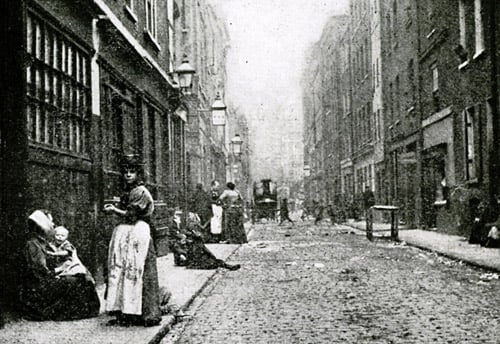
SHE HAD BEEN IN THE INFIRMARY
Apparently, she had left the lodging house on the Monday night prior to her murder and was not seen again until she re-appeared on the Friday night of that week.
She explained her absence by saying that she had, in fact, spent the week in the infirmary – a fact which, the newspaper observed, was backed up by the fact the deputy lodging house keeper had found letters which suggested she had been receiving treatment at St Bartholomew’s Hospital.
HER LAST NIGHT
The London Daily News then went on to give details of the final sightings of her:-
“…after putting in an appearance at the lodging house [she] passed out into the street till just before two on the fatal Saturday morning, when she returned eating boiled potatoes and, according to the deputy, somewhat the worse for drink.
This we have some reason to believe was a mistake on his part.
The woman was probably quite sober and wanted a bed.
She passed downstairs into the kitchen and a demand was made for payment for the bed. “I haven’t got enough,” she replied, and turned to go out again into the street. “Keep my bed for me,” said the poor creature, “I shan’t be long; I won’t be long Brummy,” she added to the watchman, as she passed out. “See that Jim keeps my doss for me.”
That was just before two o’clock last Saturday morning.
About a quarter before six she was found in a dirty little yard up in a muddy corner beneath some broken railings, her head nearly severed from her body, and her person mutilated in a manner too horrible for description.”
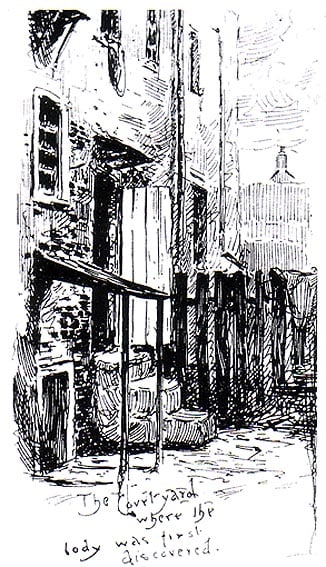
29 HANBURY STREET
The article then went on to provide its readers with an idea of the appearance of the murder site and revealed that it wasn’t uncommon for the local transient populace to use the staircases and yards of the houses for various nefarious purposes:-
“Number 29, Hanbury-street, is a house let out to various tenants, like a great many of the houses about there.
The different occupants fasten their own doors if they think proper; but as they come home at night and got out in the morning at all sorts of hours, according to their occupations, the front door is left unfastened.
Anybody is free to walk through the house passage into the back yard, and it it not uncommon in all parts of London for homeless persons to creep in and sleep in passages and staircases thus left.
In this very house only a short time since one of the residents says a man slept on the stairs certainly one night, and probably more than one. Under such circumstances, of course, anybody passing through into the yard would attract no attention.”
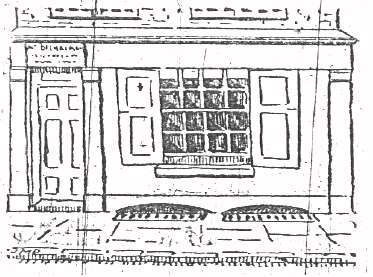
SHE WENT OUT FOR THE PRICE OF A BED
One of the things that was beginning to be discussed in the newspapers, in respect of the two most recent murders, was the fact that both Annie Chapman and Mary Nichols had, effectively, been murdered because they had been forced to go out onto the East End streets in order to try to raise sufficient money to pay for their beds in the common lodging houses that they both frequented.
As the Daily Telegraph observed:-
“…Dark Annie’s dreadful end has compelled a hundred thousand Londoners to reflect what it must be like to have no home at all except the ‘common kitchen’ of a low lodging house; to sit there, sick and weak and bruised and wretched, for lack of fourpence with which to pay for the right of a ‘doss’; to be turned out after midnight to earn the requisite pence, anywhere and anyhow; and in course of earning it to come across your murderer and to caress your assassin…”
THE PUBLIC REACTION
The fact that another murder had occurred caused feelings of fear and fascination to ripple through the district in equal measure.
The London Daily News reported that the excitement in the district was “intense” and commented that both the house where the murder had occurred and the mortuary to which the body had been taken had been “besieged by people.”
The article also stated that people were actually paying a penny a time to view the bloodstained spot in the backyard where the murder had taken place.
The divisional pilice surgeon surgeon of police, Dr George Bagster Phillips told a journalist that both he and his assistant were being called out throughout the Saturday night to attend to people who had been assaulted in the streets – some of them of “the most serious character” – and all of them arising:-
“….directly or indirectly out of the intense excitement occasioned by the discussion of this affair. Unless Mr. Phillip’s experience is different from that of other medical men in the locality, this certainly shows that even so dreadful a murder as that which has just taken place is only a part of the mischief such an occurrence originates…”
INSPECTOR ABBERLINE’S CONSULTATION
By this time Detective Inspector George Frederick Abberline had been recalled to the district to take charge of the hunt for the perpetrator of the previous murders.
He was, so The Daily News, informed its readers, already making special enquiries into the murder of Mary Nichols.
He at once, so the article continued;-
“…took up the inquiries with regard to the new crime, the two being obviously the work of the same hands. He held a consultation with Detective Inspector Helson, J division, in whose district the murder in Buck’s Row was committed, and with Acting Superintendent West, in charge of H division.
The result of that consultation was an agreement in the belief that the crimes were the work of one individual only, and that notwithstanding many misleading statements and rumours – the majority of which in the excitement of the time had been printed as fact – the murders were committed where the bodies had been found, and that no “gang” had been the perpetrators.”
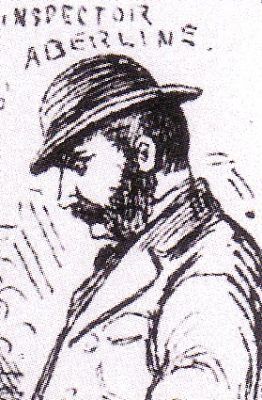
MORE HORRIBLE THAN FICTION
It is with these newspaper reports that we can get a sense of what was going on in the district in the aftermath of each Whitechapel murder and how the populace as a whole was reacting.
It also becomes apparent that newspapers, such as The Daily Telegraph and The London Daily News, were starting to notice the pitiable lifestyles of the type of women who were the chosen victims of Jack the Ripper and were trying to urge their readership to look charitably upon the plight of the everyday lives of the poor and dispossessed of the East End.
But it is also evident that the newspapers were starting to look with revulsion upon the horror of the injuries inflicted on the bodies of the victims by the unknown miscreant responsible for the crimes.
As The Times put it:-
“One may search the ghastliest efforts of fiction and fail to find anything to surpass these crimes in diabolical audacity…”
It was more than apparent that, for the people of the East End, an autumn of genuine terror was underway.

